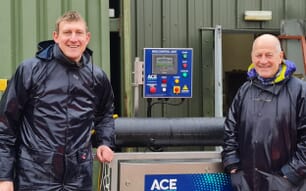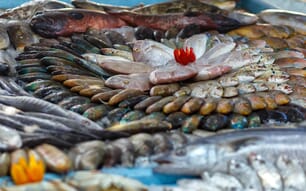Whereas other fishing regions like Copper River, Cook Inlet, Kodiak, Southeast and the Alaska Peninsula might get sockeye catches ranging from one million to five million fish, Bristol Bay’s harvests can reach into the 20 to 40 million range. “The Bay” also has the most salmon fishermen with more than 2,800 active permit holders.
Fishermen were expecting to catch about 17 million reds at Bristol Bay this summer, but it could blow past that by the time you read this. Catches already were topping two million a day and by July 4, the harvest was at 14 million - with another surge of sockeyes on the way. Salmon trackers already were predicting that the run of sockeyes homing in to Bristol Bay could top 38 million, 45 per cent over the preseason forecast.
Alaska’s statewide sockeye catch this summer is pegged at nearly 34 million, a 14 percent increase over 2013. The total salmon catch this year is projected at 133 million fish, down 47 per cent from last year’s record haul. (Summed up in two words: pink salmon.)
Independence Day thought – Commercial fishermen are the world’s only remaining hunter/gatherers for a wild capture resource.
Alaska fish tests clean - Ramped up testing this summer shows Alaska fish is free of all signs of radiation from the Fukushima nuclear meltdown after Japan’s horrific earthquake/tsunami three years ago.
“The results of the testing of the Alaska fish that were just collected look very good. There is no detection of any radiation that would have originated from Fukushima. That was very good news,” state veterinarian Bob Gerlach announced last week.
From the beginning State and federal agencies have partnered to test and track Alaska seafood for radiation. Concerns over contaminants that showed up recently in salmon and tuna caught off the Pacific coast prompted them to do more Alaska-specific testing prior to salmon season.
“The state has worked with the state Dept. of Health and DEC to develop a sampling plan to select certain species of fish from the Aleutian islands and Bristol bay, Gulf of Alaska and Southeast and we will be collecting additional samples through the summer from other species of fish to try and get background information. But at this point we haven’t been able to detect anything at all – all the samples have come up as ‘non-detects’,” Gerlach told KDLG.
Oceanographers have predicted that radiation from Fukushima was expected to hit Alaska waters this year.
“Because fish come in at different time periods, we were collecting as early as possible when the salmon fishery started, and will continue to the end of the season,” he added.
Scallops status quo – There’s been no stampede to Alaska’s scallop beds that is newly opened to all comers. The fishery has been managed under a limited entry system for years, but was changed to “open access” starting July 1.
“To date we haven’t had anyone register or obtain an observer to fish in that fishery, so we anticipate the same four vessels that have historically fished the last four to five years to be the only vessels that will fish during this scallop season,” said Mark Stichert, fishery manager at ADF&G in Kodiak.
Weathervane scallop beds dot Alaska’s waters from one end to the other, yielding a stable total harvest each year of around 400,000 pounds of shucked meats.
“Historically, the two largest beds are Yakutat and here in Kodiak,” Stichert said. “Some fishing has occurred inside Prince William Sound and up in Cook Inlet, but those two areas are both closed this season due to low abundance. We have scallop fishing that occurs in the Alaska Peninsula, a small fishery in Dutch Harbor, and a fairly sizeable harvest in the Bering Sea.”
Managers also are re-opening an old scallop bed along the Alaska Peninsula that has been closed for five years to allow the stocks to regenerate.
Fishermen’s prices for scallops can be at or above $10 a pound, making the fishery worth $4 million at the Alaska docks.
Comments wanted – Federal fishery managers want comments on plans to relax Steller sea lion protections and allow more fishing for cod and Atka mackerel along the western Aleutian Islands. It could lead to those fisheries being reopened in January after a five year closure. Deadline to comment is August 15. www.regulations.gov




